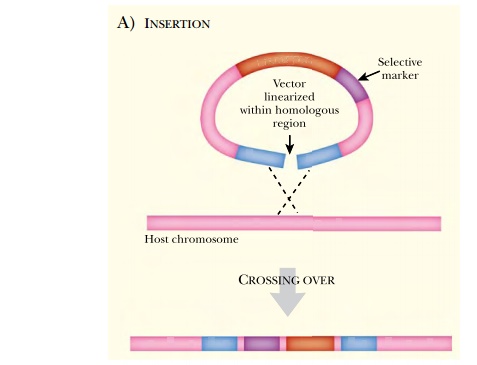Chapter: Biotechnology Applying the Genetic Revolution: Transgenic Animals
Targeting the Transgene to a Specific Location
TARGETING
THE TRANSGENE TO A SPECIFIC LOCATION
Targeting the incoming
transgene to a particular location on the host chromosome requires homologous
recombination, as opposed to the random integration that usually happens with
injected DNA. Inserting a transgene in a specific location may be desirable for
several reasons. First, chromosomal location often affects the expression of a
transgene (see earlier discussion). Second, the transgene is not necessarily a
novel gene. Sometimes the objective of genetic engineering is to replace the
original version of a particular gene by an altered version. In this case it is
obviously preferable to insert the incoming gene in the same location, and
under the same regulation, as the gene it is replacing.
Gene targeting relies on
homologous recombination, and special targeting
vectors are designed to direct the integration. The DNA to be inserted is
flanked by sequences that are homologous to those at the target location.
Targeting vectors may be subdivided into those designed to insert novel DNA and
those that replace DNA (Fig. 15.9). Targeting vectors are often linearized just
before transforming the DNA into the cell because this promotes more efficient
recombination. Integration of the required DNA segment may be selected by
antibiotics or by some other positive selection.


Related Topics